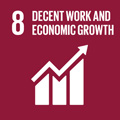- Docente: Stefania Bortolotti
- Credits: 9
- SSD: SECS-P/01
- Language: Italian
- Teaching Mode: Traditional lectures
- Campus: Bologna
- Corso: First cycle degree programme (L) in Management and Marketing (cod. 8406)
-
from Sep 17, 2024 to Dec 14, 2024
Learning outcomes
At the end of the course, the student is able to understand microeconomics, starting from economic rationality and the regimes and mechanisms of markets and price formation. The course then delves into utility functions and rational behavior under conditions of uncertainty and bounded rationality, evaluating their implications for business management
Course contents
INTRODUCTION (chapter 1)
- The Capitalist revolution and wealth inequality
- Technological change, population and economic growth
PART I: Scarcity, work, and choice (chapters 2 and 3)
- Labour, preferences, opportunity costs
- Economic growth and labour time (theory, historic evolution and cross-country differences)
- Wealth and substitution effect
PART II: Social interactions (chapter 4)
- Game theory
- Social preferences (prisoner's dilemma, public goods etc)
- Lab and field experiments
PART III: Demand and supply, monopoly, and perfect competition (chapters 7 and 8)
- Competitive markets and equilibrium
- Market power and monopoly
PART IV:Externalities and out-of-equilibrium rents (chapters 11 and 12)
- Out-of-equilibrium
- Negative externalities, property rights, bargaining, and piguvian taxes
Please make sure to check the updated program and the detailed syllabus online, on the Virtuale page of the course.
Readings/Bibliography
The CORE Team (2018), Economia: Comprendere il mondo che cambia, il Mulino.
Ebook version available here free of charges: https://www.core-econ.org/project/leconomia/
The book is also available in English. The e-book offers a number of interactive tools, including self-assessment tests.
Teaching methods
Lectures complemented by supporting material. Interactive tools, market simulations, and newspapers articles will be used during the lectures to foster the understanding of the phenomena under study.
Assessment methods
Written exam structured around three parts: multiple choice questions, theoretical questions, and graphical exercises.
During the semester, students will be able to take two partial exams (the final grade is the average of the two partials).
No additional partial exams will be scheduled during the academic year.
The students can refuse the grade only once.
The grade is graduated as follows:
<18 failed
18-23 sufficient
24-27 good
28-30 very good
30 e lode excellent
Teaching tools
The lecture slides, exercise materials, and any additional materials will be made available on the course page on Virtuale.
For exam preparation, it is necessary to study both the textbook and the aforementioned supplementary materials.
Office hours (by appointment): Monday from 5:30 PM to 7:00 PM. To ensure efficient office hours, please send an email to the instructor at least 24 hours in advance (further details will be provided in the slides of the first lecture).
Office hours
See the website of Stefania Bortolotti
SDGs



This teaching activity contributes to the achievement of the Sustainable Development Goals of the UN 2030 Agenda.
